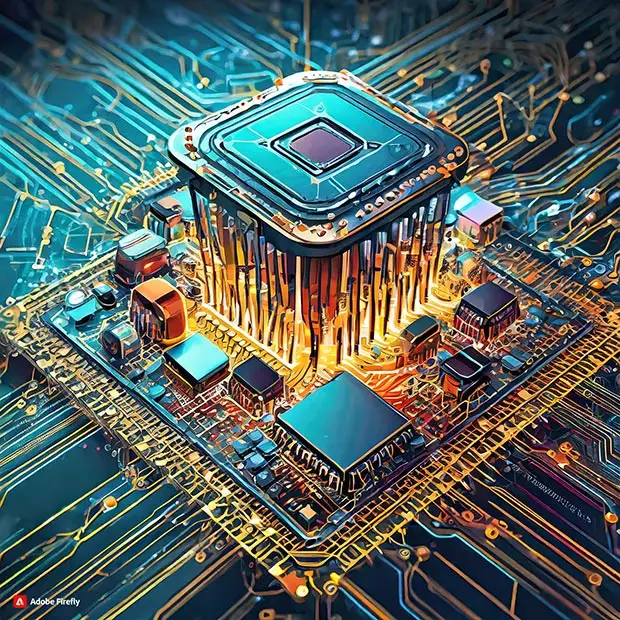Innovative Micro Technology: Revolutionizing the Future
Innovation knows no bounds, especially in the world of micro technology. From the tiny transistors in our smartphones to the cutting-edge microelectromechanical systems (MEMS) that power medical devices, innovative micro technology shapes how we live, work, and interact with the world around us.
Unraveling the Wonders of Micro Technology
Micro technology encompasses a vast array of miniature electronic circuits and systems, revolutionizing industries and pushing the boundaries of what’s possible. Whether it’s creating ultra-compact sensors for environmental monitoring, developing microfluidic devices for biomedical applications, or crafting microscale actuators for aerospace engineering, the potential of micro technology knows no bounds.
A Glimpse into the Past: The Origins of Micro Technology
The roots of microtechnology can be traced back to the 1950s when semiconductor structures were first integrated into small yet powerful microelectronic chips. Since then, the field has evolved by leaps and bounds, driven by advancements in materials science, manufacturing techniques, and design methodologies. The advent of microprocessors in the 1970s marked a significant milestone, ushering in an era of unprecedented computing power and miniaturization.
Exploring the Boundaries: Micro vs. Nano Technology
While micro technology operates on a scale ranging from one micrometer to one millimeter, nano technology takes miniaturization to the next level, operating at the nanometer scale. While both fields share commonalities in their applications and capabilities, nano technology delves even deeper into molecular manipulation and atomic precision. Nanoelectronics, for example, promises to revolutionize how we process, send, and store information, opening up new possibilities for innovation and discovery.
Leadership and Vision: The Story Behind Micro Technologies
Micro Technologies owes its success to visionary leaders like founder Gerry Tucci and current President and CEO Michael Tucci. With a commitment to excellence and a passion for innovation, Micro Technologies continues to push the envelope in micro technology, driving advancements that redefine what’s possible in the digital age. Micro Technologies remains at the forefront of micro technology innovation through strategic partnerships, research collaborations, and a dedicated team of engineers and scientists.
Pioneering the Path: The Birth of the Microprocessor
The advent of the microprocessor marked a pivotal moment in the history of micro technology. While the debate rages on about who truly invented the microprocessor, one thing is clear: the Intel 4004, released in 1971, was the first commercially available microprocessor, paving the way for a digital revolution that continues today. Since then, microprocessors have become ubiquitous, powering everything from personal computers and smartphones to smart appliances and industrial machinery.
Nanotechnology: The Next Frontier in Electronics
As technology evolves, nanotechnology emerges as the next frontier in electronics. From flash memory chips to antimicrobial coatings for consumer devices, nanoelectronics promises to revolutionize how we process, send, and store information, opening up new possibilities for innovation and discovery. Nanotechnology is key to addressing some of society’s most pressing challenges with applications in healthcare and energy to environmental monitoring and telecommunications.
In conclusion, innovative micro technology is not just about making things smaller; it’s about pushing the boundaries of what’s possible and reimagining the future in ways we never thought possible. As we continue to unlock the potential of micro and nano technology, we embark on a journey of discovery that promises to reshape the world as we know it.
Here are Some FAQs about:
What is innovative micro technology?
Innovative micro technology refers to the development and application of small-scale technologies to create microelectronic circuits and micro electromechanical systems (MEMS). These technologies involve the integration of tiny components onto semiconductor materials, enabling the creation of compact and efficient devices.
How does innovative micro technology differ from traditional technology?
Innovative micro technology differs from traditional technology by focusing on miniaturization and integration. It involves creating smaller, more efficient components and systems, which can lead to advancements in various fields such as electronics, healthcare, and manufacturing.
What are some common applications of innovative micro technology?
Common applications of innovative micro technology include microelectronics for smartphones and computers, MEMS devices for sensors and actuators, microfluidic systems for biomedical research, and nanoelectronics for advanced materials and devices.
How has innovative micro technology evolved?
Innovative micro technology has evolved significantly since its inception in the 1950s, with advancements in semiconductor manufacturing techniques, materials science, and nanotechnology. These advancements have led to the development of smaller, faster, and more efficient devices with many applications.
Who are the key players in the field of innovative micro technology?
Key players in innovative micro technology include leading semiconductor companies, research institutions, universities, and startups specializing in microelectronics, MEMS, nanotechnology, and related fields.
What are the potential benefits of adopting innovative micro technology?
Innovative micro technology can lead to increased efficiency, reduced size and weight of devices, improved performance, lower costs, and the development of new products and applications.
Are there any limitations or challenges associated with innovative micro technology?
Some limitations and challenges associated with innovative micro technology include technical complexity, high manufacturing costs, scalability issues, and potential reliability concerns.
How can businesses incorporate innovative micro technology into their operations?
Businesses can incorporate innovative micro technology into their operations by investing in research and development, collaborating with technology partners and suppliers, and exploring new applications and markets.
What are some examples of successful implementations of innovative micro technology?
Examples of successful implementations of innovative micro technology include the development of microprocessors, MEMS sensors for automotive and consumer electronics, microfluidic devices for medical diagnostics, and nanoelectronics for advanced materials and devices.
Where can I find more information about the latest trends and advancements in innovative micro technology?
You can find more information about the latest trends and advancements in innovative micro technology through industry publications, research papers, conferences, and online resources from leading organizations and institutions.

